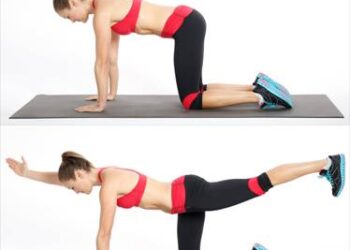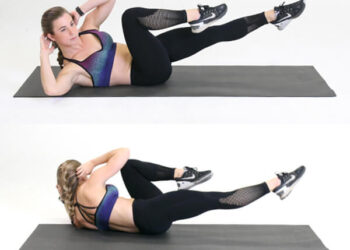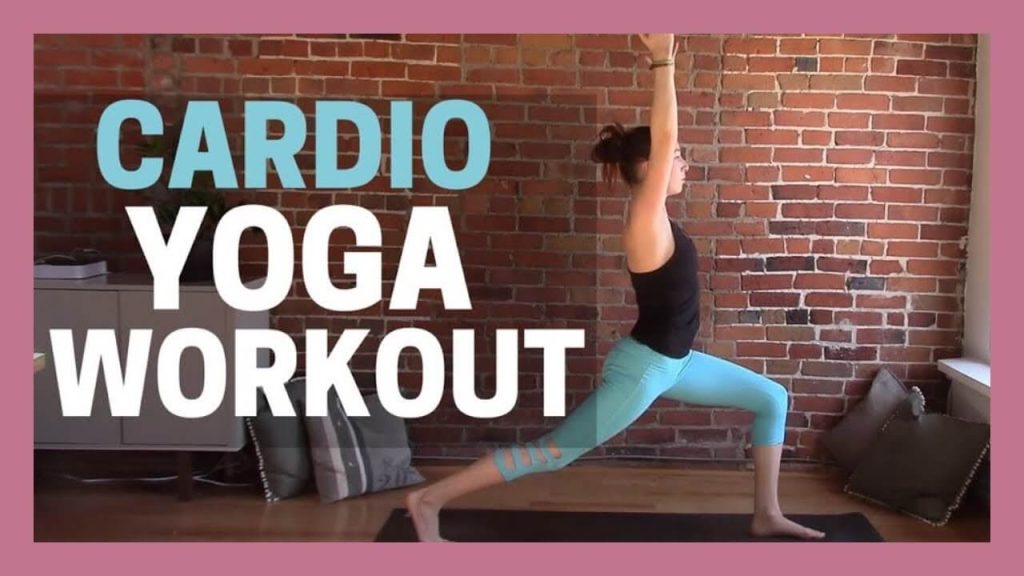
Cardio and Yoga are diverse workout methods. When combined, they create a comprehensive exercise regimen, blending cardiovascular health benefits from Cardio and flexibility and balance from Yoga. Below is a detailed guide on how to effectively integrate these two methods.
1. Understanding Cardio and Yoga:
Cardiovascular exercise, commonly known as Cardio, encompasses a variety of physical activities aimed at elevating the heart rate and enhancing cardiovascular health. It involves dynamic movements that engage large muscle groups and boost endurance. On the other hand, Yoga, originating from ancient India, is a practice that combines physical postures, controlled breathing, and meditation techniques to foster harmony between the body and mind. Understanding the fundamental differences and benefits of these two distinct yet complementary practices is pivotal for an effective fitness regimen.
a. Cardio Exercise:
- Cardiovascular Health: Cardio exercises primarily target the cardiovascular system, enhancing heart health and increasing lung capacity. Activities such as running, cycling, swimming, and jumping rope stimulate the heart, improving its efficiency in pumping blood throughout the body.
- Caloric Expenditure: One of the key benefits of Cardio is its effectiveness in burning calories. High-intensity Cardio workouts aid in weight management by expending a considerable amount of energy, contributing to weight loss and fat reduction.
- Enhanced Endurance: Regular Cardio workouts progressively improve endurance levels, enabling individuals to sustain physical activity for more extended periods without experiencing fatigue. This endurance enhancement extends to daily activities, promoting overall functional fitness.
- Stress Reduction: Engaging in Cardio exercises triggers the release of endorphins, the body’s natural mood elevators, reducing stress levels and improving overall mental well-being. Additionally, it helps in managing anxiety and depression.
b. Yoga Practices:
- Holistic Approach: Yoga is rooted in a holistic approach, focusing on uniting the mind, body, and spirit. It emphasizes the importance of balance, flexibility, strength, and mental clarity through physical postures (asanas), controlled breathing (pranayama), and meditation (dhyana).
- Flexibility and Mobility: Practicing Yoga enhances flexibility by stretching and elongating muscles and connective tissues. Consistent Yoga practice promotes improved joint mobility and range of motion, reducing the risk of injuries and enhancing overall physical function.
- Mindfulness and Stress Relief: Yoga encourages mindfulness and present-moment awareness. Through breath-centered movements and meditation, it aids in stress reduction, relaxation, and the cultivation of a calm and focused mind.
- Balanced Energy Flow: The practice of Yoga is centered around the concept of prana, the life force energy. Yoga poses and breathing exercises facilitate the balanced flow of prana throughout the body, promoting vitality and overall well-being.
c. Synergy between Cardio and Yoga:
- Complementary Nature: While Cardio emphasizes physical exertion and cardiovascular benefits, Yoga complements this by focusing on balance, flexibility, and mental tranquility. The integration of both practices creates a comprehensive approach to fitness.
- Balance between Effort and Rest: Cardio workouts challenge the body, while Yoga provides a counterbalance by fostering relaxation, aiding muscle recovery, and enhancing flexibility, ensuring a well-rounded fitness routine.
- Combined Impact on Health: The combined practice of Cardio and Yoga offers a holistic approach to health, encompassing both physical and mental well-being. The cardiovascular benefits of Cardio are enhanced by the flexibility, stress reduction, and mindfulness derived from Yoga.
Understanding the unique characteristics and benefits of Cardio and Yoga aids individuals in tailoring their workout routines to suit their specific fitness goals and preferences. Integrating both practices into a cohesive regimen promotes a balanced, healthy lifestyle that nurtures the body and mind.
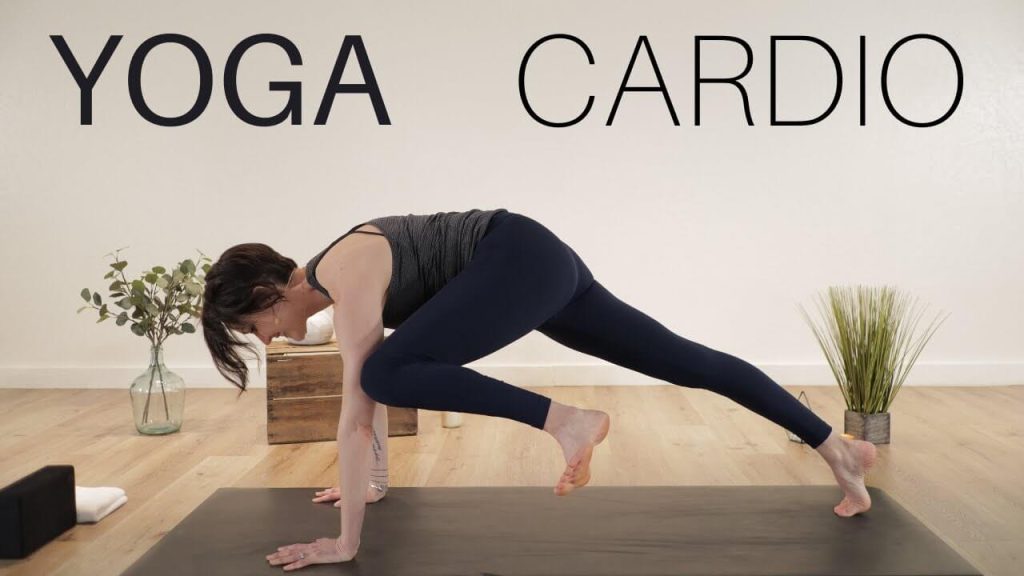
2. Start with Cardio:
The initiation of a workout routine with Cardio serves as a vital component in preparing the body for physical exertion and initiating the calorie-burning process. This section focuses on the significance of commencing a fitness session with Cardio exercises, encompassing warm-up routines and gradual intensity increments.
a. Importance of Warm-up:
- Preparation and Activation: A Cardio warm-up session serves as a crucial preparatory phase, gradually elevating the heart rate and priming the body for more strenuous activities. It activates the muscles, increases blood flow, and enhances joint flexibility, reducing the risk of injuries during subsequent exercises.
- Mental Preparation: Beyond its physical benefits, a warm-up session aids in mental preparation by transitioning the mind into a focused state conducive to the workout ahead. It establishes a mental connection between the individual and their exercise regimen, enhancing performance and engagement.
b. Components of an Effective Warm-up:
- Dynamic Movements: Effective warm-ups involve dynamic movements, such as brisk walking, light jogging, or jumping jacks. These activities progressively elevate the heart rate and warm up the muscles.
- Range of Motion Exercises: Incorporating exercises that target various muscle groups and joints, such as arm circles, leg swings, or torso twists, enhances joint mobility and flexibility, preparing the body for more intense physical activities.
- Gradual Intensity Increase: The warm-up should gradually increase in intensity over 5-10 minutes, starting with low-intensity movements and gradually progressing to moderate intensity. This progressive increase readies the body for the workout while preventing sudden stress on the cardiovascular system.
c. Transitioning to Cardio Workouts:
- Seamless Transition: Following the warm-up phase, transitioning to Cardio workouts involves smoothly shifting to higher-intensity activities, such as running, cycling, or high-intensity interval training (HIIT). This transition should be gradual to prevent shock to the system.
- Progressive Approach: Beginners should start with moderate-intensity Cardio exercises and gradually progress to higher intensities as endurance and fitness levels improve. This gradual progression minimizes the risk of overexertion and injuries.
d. Monitoring and Adjustment:
- Monitoring Heart Rate: Monitoring heart rate during Cardio exercises provides valuable insights into exercise intensity and allows individuals to stay within their target heart rate zones for optimal benefits.
- Listening to the Body: Paying attention to physical cues like fatigue, breathing rate, and perceived exertion levels is crucial. Adjustments in intensity or duration should be made based on these cues to prevent excessive strain or fatigue.
e. Cool-down:
- Importance of Cool-down: Concluding a Cardio session with a proper cool-down routine is essential for gradually reducing heart rate, preventing dizziness, and aiding muscle recovery.
- Gradual Deceleration: A cool-down involves slowing down the intensity of the workout gradually. Walking or gentle jogging for 5-10 minutes allows the heart rate to return to its normal range and prevents blood pooling in the extremities.
f. Hydration and Recovery:
- Hydration Post-Cardio: Rehydrating the body after a Cardio session is vital to replace fluids lost through sweating and maintain proper bodily functions.
- Stretching for Recovery: Incorporating light stretching exercises post-Cardio helps in muscle recovery, reduces muscle soreness, and maintains flexibility.
g. Consistency and Progression:
- Consistent Cardio Routine: Adhering to a consistent Cardio routine ensures progress and continuous improvement in cardiovascular health and endurance.
- Gradual Progression: Over time, progressively increase the duration, frequency, or intensity of Cardio workouts to challenge the body and achieve fitness goals effectively.
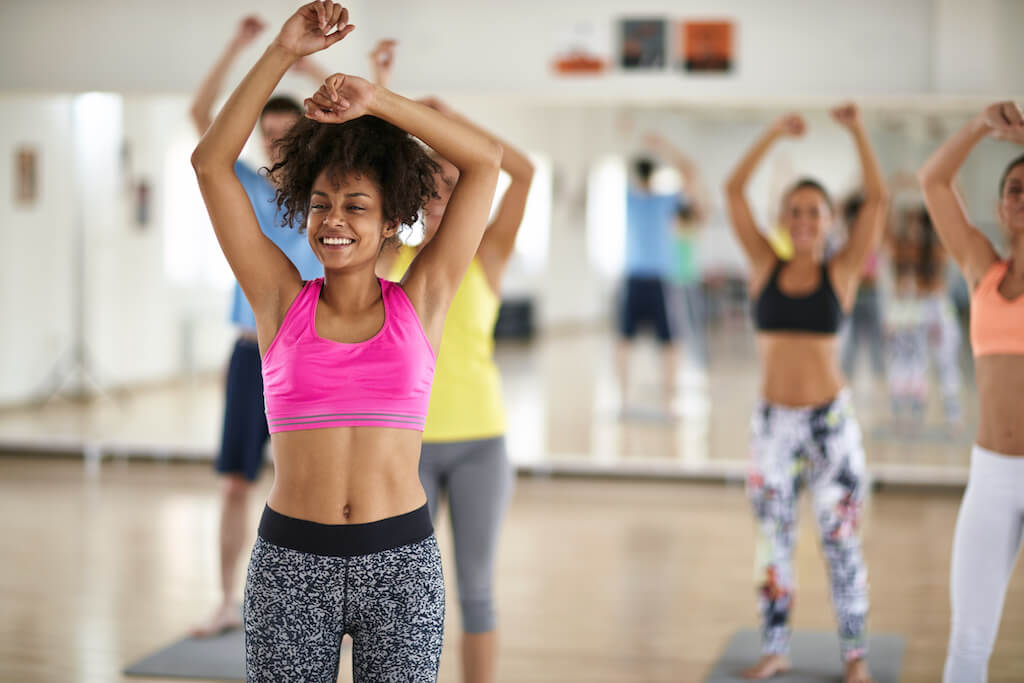
3. Transitioning to Yoga: Seamlessly Embracing Serenity
Transitioning from Cardio exercises to the serene practice of Yoga offers a harmonious shift, allowing your body and mind to seamlessly bridge the intensity of physical exertion to the tranquility of inner balance. Here’s an intricate guide to help you smoothly transition:
1. Embrace the Shift in Mindset:
- Mindful Awareness: As you transition, shift your focus from the dynamic and high-energy nature of Cardio to the calm and meditative ambiance of Yoga. Center your mind on the present moment, letting go of external distractions.
- Breath Awareness: Begin by attuning yourself to your breath. Transitioning to Yoga involves emphasizing deep, conscious breathing, syncing each movement with inhalation and exhalation, fostering a sense of mindfulness.
2. Gentle Post-Cardio Stretches:
- Ease Into Stillness: After Cardio, engage in gentle stretches focusing on areas that were predominantly active during your Cardio session. These stretches relax tightened muscles and initiate the transition towards a more tranquil state.
- Deepen Flexibility: Incorporate Yoga poses that emphasize stretching and lengthening muscles, such as Forward Folds, Seated Twists, or Low Lunges. These help release tension, enhance flexibility, and prepare the body for deeper Yoga practice.
3. Mind-Body Alignment:
- Centering Techniques: Transition to Yoga by practicing grounding and centering techniques like Mountain Pose (Tadasana) or Child’s Pose (Balasana). These postures bring attention to alignment, posture, and centering, fostering inner tranquility.
- Transition Poses: Integrate transitional Yoga poses that bridge the gap between the dynamic nature of Cardio and the peacefulness of Yoga. Incorporate movements like Sun Salutations (Surya Namaskar) to gradually transition your body into the rhythm of Yoga.
4. Focus on Relaxation and Mindfulness:
- Mindfulness Meditation: Transitioning to Yoga involves mindfulness meditation, where you focus on breath awareness or engage in guided meditation to calm the mind and invite a sense of relaxation.
- Savasana (Corpse Pose): End your transition phase with Savasana, allowing your body to relax completely. This pose promotes physical and mental relaxation, providing a tranquil bridge between the preceding activities and the main Yoga practice.
5. Cultivate a Peaceful Environment:
- Create a Soothing Ambiance: Set the tone by transitioning to a serene environment conducive to Yoga. Dim the lights, play soft music, or light candles, fostering a tranquil space for your practice.
- Mind-Body Harmony: Cultivate a sense of inner peace and tranquility by consciously detaching from external stressors. Encourage a peaceful mindset, allowing Yoga to become a sanctuary for inner calmness.
Transitioning from Cardio to Yoga is not just a physical shift but a mindful transition, encompassing the harmonization of body, breath, and consciousness. Embrace this transition as an opportunity to merge the vigor of Cardio with the serene grace of Yoga, nurturing holistic well-being.
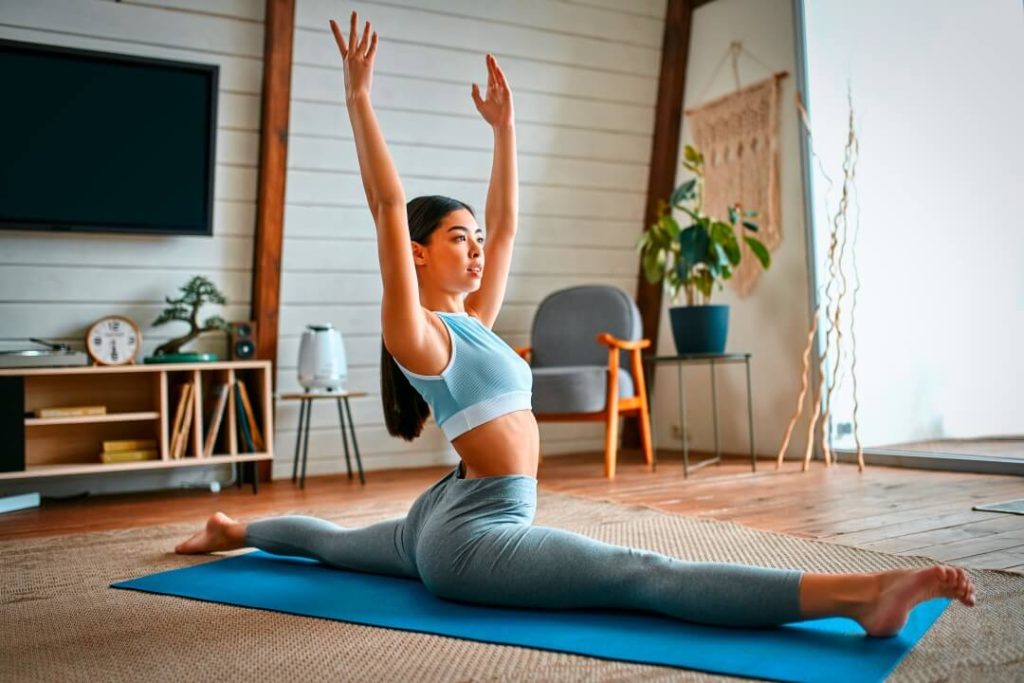
4. Integrating Yoga and Cardio: Harmonizing Strength and Serenity
The amalgamation of Yoga and Cardio unveils a powerful synergy, combining the invigorating benefits of Cardio with the calming influence of Yoga. This section delves into an intricate guide on integrating these two practices seamlessly:
1. Hybrid Warm-up Routine:
- Cardio-based Warm-up: Initiate with a brief Cardio warm-up, like a brisk walk or light jogging, to elevate heart rate and warm muscles.
- Yoga-inspired Stretching: Transition into Yoga-influenced dynamic stretches to further loosen muscles and enhance flexibility. Incorporate gentle movements like Cat-Cow or Sun Salutations.
2. Cardio Burst with Yoga Flows:
- Interval Training Fusion: Combine Cardio bursts, such as sprinting or jumping jacks, with Yoga flows. Alternate between high-intensity Cardio and Yoga sequences for an invigorating yet mindful workout.
- Yoga Poses as Active Rest: Utilize Yoga poses like Warrior or Tree Pose as active rest periods between Cardio intervals. These poses provide a moment to catch your breath while maintaining movement.
3. Mindful Cool-down:
- Cardio Wind-down: Gradually decrease Cardio intensity, transitioning to a slower pace or lower-impact movements, signaling the conclusion of the Cardio segment.
- Yoga-based Cool-down: Conclude with calming Yoga poses like Seated Forward Bend or Pigeon Pose to ease heart rate, release tension, and transition into a serene state.
4. Flowing Yoga Sequences:
- Pre-Cardio Yoga Flow: Kickstart your session with a Yoga flow incorporating dynamic poses like Downward Dog to Plank, energizing the body and preparing it for Cardio.
- Post-Cardio Yoga Flow: After Cardio, opt for restorative Yoga sequences with gentle poses like Child’s Pose or Bridge Pose to aid muscle recovery and ease any tension from the vigorous activity.
5. Breathwork Integration:
- Conscious Breathing: Infuse Yoga-inspired breathwork into Cardio sessions. Practice controlled breathing techniques during Cardio intervals to maintain focus and calmness amidst intensity.
- Mindful Breathing in Yoga: Emphasize deep, intentional breathing during Yoga poses, syncing breath with movement to enhance body awareness and mindfulness.
6. Cross-training and Variations:
- Alternate Workout Days: Incorporate days focused solely on Yoga or Cardio to prevent workout plateaus and allow muscle recovery.
- Variety in Workouts: Explore different Yoga styles or Cardio exercises to add diversity, keeping workouts engaging and preventing monotony.
7. Listen to Body Signals:
- Self-Awareness: Pay attention to your body’s responses during the integrated sessions. Modify movements or intensities based on how your body feels to prevent overexertion or injury.
- Rest and Recovery: Allow adequate rest between integrated sessions to facilitate muscle recovery and prevent burnout.
Integrating Yoga and Cardio is a harmonious blend that offers the best of both worlds—a robust physical workout merged with the mental tranquility of Yoga. Embrace this fusion as an opportunity to nurture holistic well-being and achieve optimal fitness levels.

5. Seek Ongoing Support and Enhancement: Elevating Your Fitness Journey
Continuously seeking support and avenues for improvement is pivotal in ensuring a successful and fulfilling fitness journey. This section focuses on guiding you through this ongoing quest for enhancement:
1. Professional Guidance and Assistance:
- Expert Consultation: Engage with certified Yoga instructors and Fitness Trainers for personalized guidance. Seek their expertise to tailor your routine and address specific fitness goals effectively.
- Regular Check-ins: Schedule periodic sessions with professionals to evaluate progress, refine techniques, and ensure adherence to proper form and alignment.
2. Progressive Advancement:
- Gradual Progression: Incrementally challenge yourself by gradually intensifying workouts. Increase repetitions, duration, or difficulty levels under professional supervision to avoid plateaus and continuously improve.
- Diversify Workouts: Explore new variations, advanced poses, or different Cardio routines. Incorporate these changes to keep workouts stimulating and prevent monotony.
3. Holistic Health Assessment:
- Body Composition Analysis: Periodically assess body composition metrics like body fat percentage, muscle mass, and overall fitness levels. Utilize this data to adapt and modify workouts as needed.
- Comprehensive Health Check-ups: Regular health check-ups and assessments help identify any underlying issues, ensuring fitness routines align with overall health objectives.
4. Nutritional Support and Guidance:
- Consult a Nutritionist: Seek advice from nutrition experts to align diet plans with fitness goals. Optimize nutrition to support workouts, enhance recovery, and promote overall well-being.
- Hydration and Balanced Diet: Maintain proper hydration and adhere to a balanced diet rich in nutrients essential for muscle recovery, energy replenishment, and overall health.
5. Mindfulness and Mental Health:
- Mind-Body Connection: Explore practices like meditation, mindfulness exercises, or Yoga Nidra to enhance mental focus, manage stress, and foster a deeper mind-body connection.
- Rest and Recovery: Prioritize sufficient rest periods between workouts to allow for muscle recovery, preventing fatigue and supporting overall mental well-being.
6. Community Engagement and Support:
- Join Fitness Communities: Participate in fitness groups or communities, both online and offline. Engaging with like-minded individuals fosters motivation, accountability, and a supportive network.
- Share and Learn: Share experiences and learn from others in the fitness community. Exchange tips, progress stories, and challenges to gain insights and stay motivated.
7. Adaptation and Flexibility:
- Adjust to Changing Needs: Be adaptable to life changes, varying schedules, or physical limitations. Modify workouts accordingly to accommodate these shifts while staying committed to fitness goals.
- Celebrate Milestones: Acknowledge and celebrate progress, no matter how small. Appreciate achievements to stay motivated and inspired on your fitness journey.
Seeking continuous support and embracing opportunities for enhancement is an ongoing process integral to achieving sustainable fitness goals. Embrace this journey as a constant evolution towards a healthier, stronger, and more resilient version of yourself.
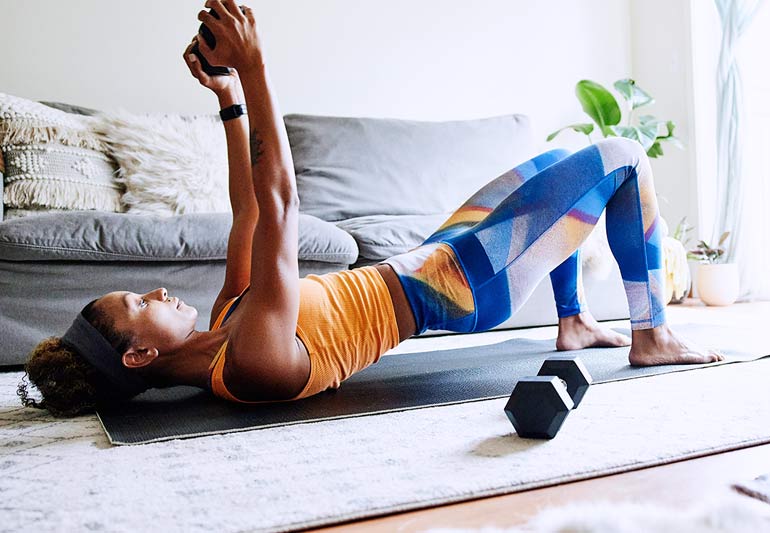
6. Ensure Safety: Prioritizing Well-being in Your Fitness Journey
Ensuring safety during workouts is paramount to prevent injuries and promote a sustainable fitness routine. This section provides a comprehensive guide to prioritize safety in your fitness endeavors:
1. Proper Warm-up and Cool-down:
- Pre-Workout Preparations: Commence each session with a thorough warm-up routine to prepare muscles, joints, and the cardiovascular system for physical exertion.
- Post-Workout Recovery: Conclude sessions with a proper cool-down to gradually reduce heart rate and prevent muscle soreness. Incorporate stretches to enhance flexibility and aid in recovery.
2. Appropriate Equipment Usage:
- Correct Equipment Fit: Ensure fitness equipment fits properly and is adjusted to your body size and comfort. Improperly adjusted gear can lead to injuries or discomfort.
- Regular Equipment Check-ups: Inspect workout equipment regularly for any signs of wear and tear. Malfunctioning gear poses a risk of accidents and injuries.
3. Correct Technique and Form:
- Professional Guidance: Seek guidance from certified trainers or instructors to learn correct form and technique for exercises and Yoga poses.
- Focus on Alignment: Emphasize proper body alignment and posture during workouts to prevent strain on muscles or joints.
4. Gradual Progression and Avoid Overexertion:
- Slow and Steady Approach: Gradually increase intensity or duration of workouts to allow your body to adapt. Avoid sudden spikes in intensity that can lead to injuries.
- Listen to Your Body: Pay attention to fatigue, discomfort, or pain signals from your body. Take breaks as needed and refrain from pushing yourself beyond your limits.
5. Hydration and Nutrition:
- Adequate Hydration: Maintain proper hydration levels before, during, and after workouts. Dehydration can impact performance and increase the risk of injuries.
- Balanced Nutrition: Ensure a well-balanced diet that supports your fitness goals. Consume nutrients essential for energy, muscle recovery, and overall health.
6. Rest and Recovery:
- Rest Days: Incorporate rest days into your routine to allow for muscle recovery and prevent burnout. Rest is crucial for muscle repair and overall well-being.
- Quality Sleep: Prioritize sufficient sleep to support recovery, enhance performance, and maintain overall health.
7. Listen to Professional Advice and Your Body:
- Seek Professional Advice: Consult healthcare professionals for any underlying health conditions or concerns before starting a new fitness regimen.
- Respect Body Signals: If experiencing persistent pain or discomfort during workouts, seek medical advice. Ignoring signals from your body can exacerbate injuries.
8. Safety in Group Settings:
- Awareness in Group Classes: Be mindful of surroundings and fellow participants in group fitness classes to avoid collisions or accidents.
- Follow Instructions: Listen attentively to instructors’ guidance and follow safety instructions for specific exercises or equipment.
9. Weather and Environment Considerations:
- Outdoor Exercise Precautions: In outdoor workouts, consider weather conditions. Stay hydrated in hot weather and take precautions in cold or wet conditions.
- Safety in Natural Environments: Be aware of hazards in natural environments such as trails or parks. Exercise caution to avoid accidents or injuries.
Prioritizing safety is the cornerstone of a sustainable and rewarding fitness journey. By embracing these safety measures, you foster an environment conducive to achieving fitness goals while safeguarding your overall well-being.
Source: Admin compiled from the Internet




